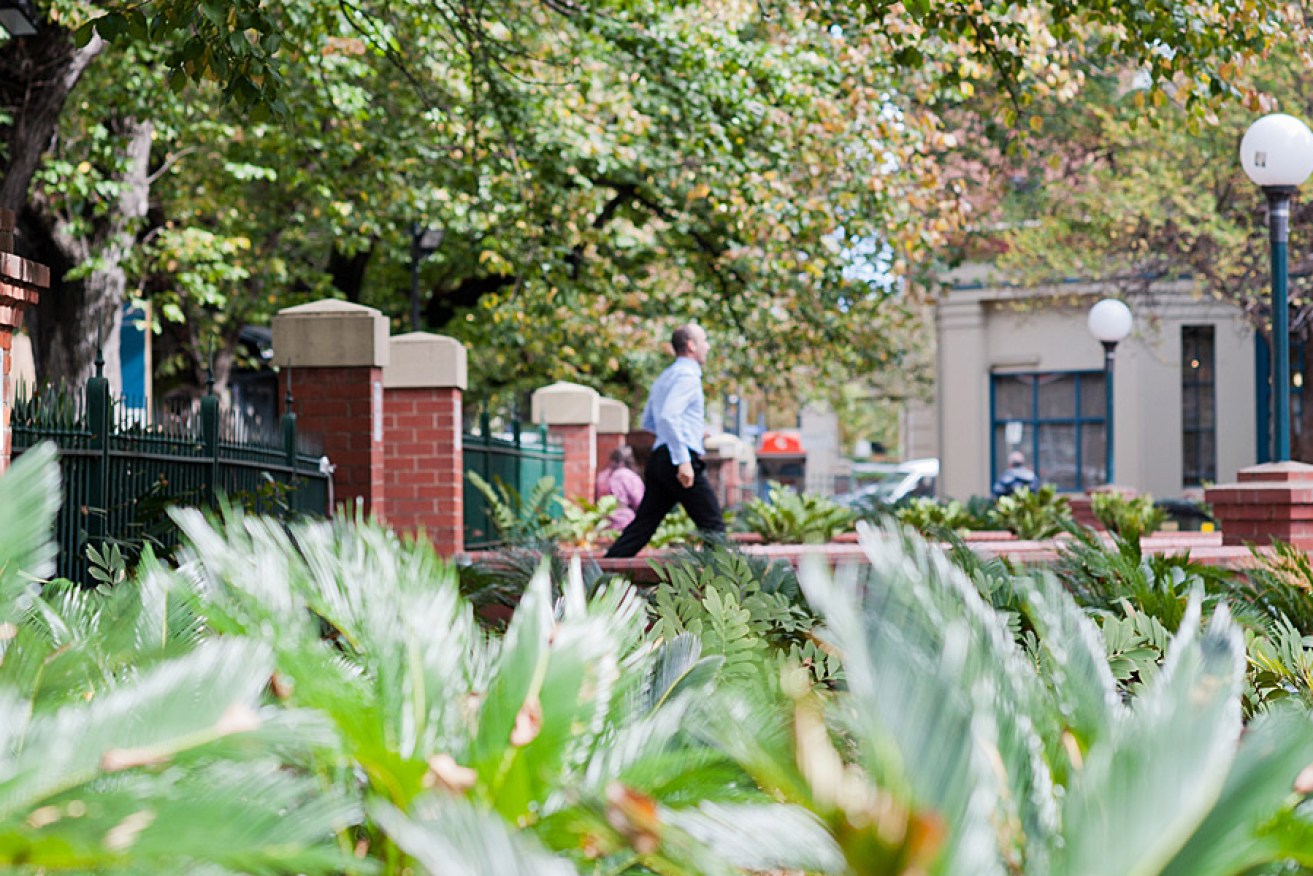Bringing culture to the old RAH site

A cultural centre on the RAH site should be an appealing prospect. Photo: Nat Rogers/InDaily
Two of Adelaide’s key cultural and learning institutions are clamouring for a piece of the current Royal Adelaide Hospital site, due to be vacated in 2016.
Adelaide University, which probably won’t be placated until it owns a little bit of each property on North Terrace, has called for a “creative campus” which will include teaching spaces, an event hall and, in conjunction with the Art Gallery of SA, a contemporary art museum.
The Art Gallery, meanwhile, has ambitious plans of its own for the site. Director Nick Mitzevich shared with InDaily his vision for an “art discovery centre” that would showcase the gallery’s 65,000-piece collection in its entirety.
The State Government’s public comments on the future of the site, as well as the parameters of its design competition, tersely maintain the need for any redevelopment to be “economically viable”.
Mitzevich enthuses that the expansion of the public display of the gallery’s collection would be a “major economic generator”. I’d love to think it that flinging open the doors to its collection could generate rivers of gold, but the challenge of making money through art is a dilemma facing many worthy ventures in Adelaide.
A cultural centre, featuring an expansive contemporary gallery, should be an appealing prospect. It would complement the boutique bustle of the east end, supplementing the many pubs, bars and restaurants on that side of the city. And although anything which doesn’t look like the beige Frankenstein’s monster is a plus, there’s tremendous scope for a bold, attractive architectural design.
But before the State Government decides to back a joint university/art gallery plan, there are several factors to consider. These include Adelaide University’s track record with physical infrastructure, the cultural costs of prioritising economic viability, and the role of a gallery in curating its collection.
I’m concerned that a strategy which showcases all the Art Gallery’s works might lose sight of this mission of curation and sacrifice quality for access.
Since the final days of the vice-chancellorship of James McWha, the university has binged on new infrastructure. In the past three years, it’s completed Ingkarni Wardli (the new engineering and maths building), Inova21 (the orange robot honeycomb which houses a new photonics research facility and a vast new lecture hall), and the risibly titled (but really quite useful) Hub Central. These new buildings become icons for the university and points of pride for senior administrators, but students – and many staff – are concerned that they are moving money and focus from its raison d’etre: quality teaching.
Quality of service is also relevant when it comes to the Art Gallery of SA. Great galleries are great not just because of their endowment of thought-provoking art, but also because of how they’re curated.
Curation dictates which works are shown, in what order, and how the floor and wall space is utilised to allow each work to make an impact befitting its intent. Good curation thus requires patience, tact and discretion: art often speaks loudest in an austere room. It’s also about teaching patrons about the significance or stated intent of a work.
I’m concerned that a strategy which showcases all the Art Gallery’s works might lose sight of this mission of curation and sacrifice quality for access.
Finally, I want to sound a note of caution about the Government’s requirement for the site to demonstrate economic “viability”. How many promising cultural initiatives have been broken on the rock of economic rationalism? I don’t want economic viability, however vaguely articulated, to be a byword for artistic deficiency.
Art, particularly the work of contemporary local artists, is an expensive undertaking. It takes a strong nerve to feature the work of local artists – an idea of which I’d be in strong favour – knowing that it might contribute more to the cultural life of our state than to its bottom line. The political costs might well be too great for a government already chagrined by charges of economic fecklessness.
But let’s keep this conversation going. Let’s not be put off by any accusations of bourgeois indulgence and keep thinking about how to use what will soon be a prime piece of real estate in the best way possible.
Mateo is a blogger at gutek.com.au and speechwriter for the State Minister for Police, Finance and Road Safety.




